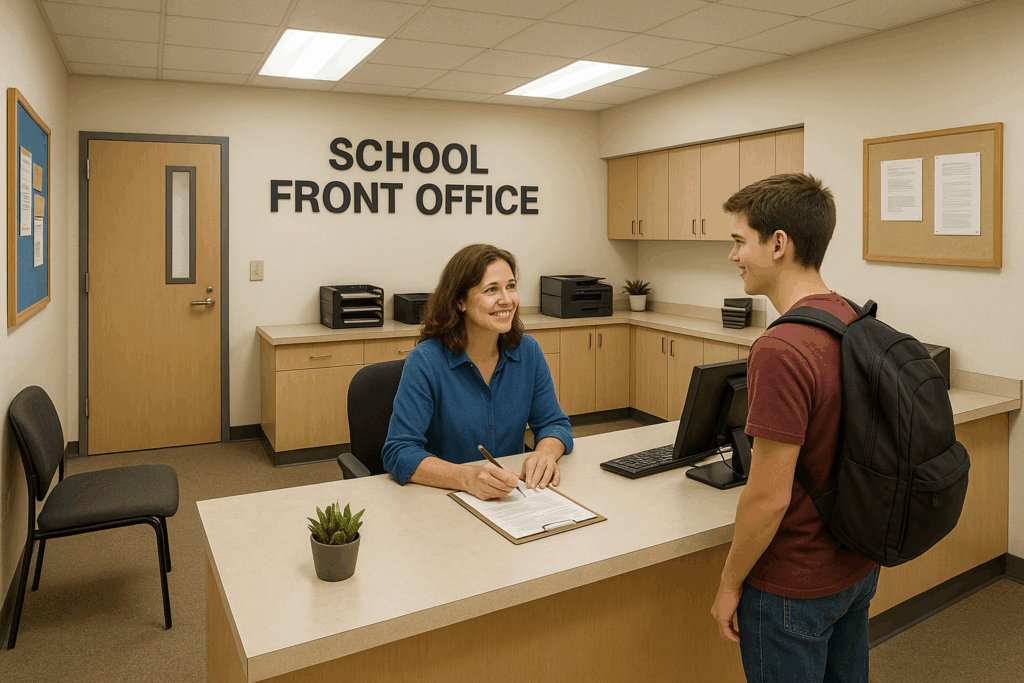The safety of our children is paramount, and ensuring that schools are secure environments where students can learn and grow without fear is a top priority for parents, educators, and policymakers alike. In this article, we will explore seven effective ways to make schools safer, encompassing physical security measures, training and awareness programs, emergency preparedness, and more.
Physical Security Measures
Secured Entrances and Exits
One of the most fundamental aspects of school safety is controlling access to the building. Schools should have a single, secured main entrance with a system in place to monitor and manage visitors. All other doors should remain locked during school hours, with alarms or other mechanisms to notify staff of unauthorized entry.
Visitor Management System
A comprehensive visitor management system is essential for keeping track of who is in the building at all times. This may include requiring visitors to sign in, provide identification, and wear visible visitor badges. Schools should also have a process in place for conducting background checks on frequent or long-term visitors, such as volunteers and contractors.
Security Cameras and Surveillance
Installing security cameras throughout the school can serve as both a deterrent and a valuable tool for identifying and resolving security incidents. Cameras should be strategically placed at entrances, exits, and other critical areas to monitor activity and ensure the safety of students and staff.
Training and Awareness Programs
Active Shooter Training
Though rare, active shooter incidents are a tragic reality that schools must prepare for. Regular active shooter training for staff and students can help save lives in the event of an emergency. This training should focus on the principles of “Run, Hide, Fight” and emphasize the importance of situational awareness and quick decision-making.
Bullying and Harassment Prevention
Creating a safe school environment goes beyond physical security measures. Schools must also address the emotional and social well-being of their students by implementing bullying and harassment prevention programs. These initiatives should educate students and staff about recognizing and reporting bullying and provide resources for those affected by it.
Mental Health Awareness
Promoting mental health awareness within the school community is essential for early identification and intervention of mental health concerns. Providing training for staff on recognizing signs of mental health issues and offering resources for students, such as access to counselors, can help create a supportive environment where students feel comfortable seeking help.
Emergency Preparedness and Response
Evacuation Drills
Regular evacuation drills are crucial for ensuring that students and staff know how to respond in the event of an emergency, such as a fire or natural disaster. These drills should be conducted at least twice a year and include clear instructions on evacuation routes and assembly points.
Communication Systems
Effective communication is key during an emergency. Schools should have a reliable communication system in place that allows staff to quickly share information and coordinate response efforts. This may include intercom systems, mass notification tools, and designated emergency channels for staff.
Emergency Response Teams
Designating and training emergency response teams within the school can help streamline response efforts during a crisis. These teams should consist of staff members who are trained in first aid, crisis management, and other relevant skills. Regularly reviewing and updating emergency response plans is also essential to ensure that they remain effective and up-to-date.
School Resource Officers
School resource officers (SROs) are trained law enforcement professionals who work within the school community to provide safety and security. SROs can serve as a valuable resource for students and staff, providing guidance on safety issues and acting as a liaison between the school and local law enforcement agencies.
Cybersecurity
Protecting Personal Information
With schools increasingly relying on digital tools and resources, ensuring the security of personal information is more important than ever. Schools should have robust cybersecurity measures in place, such as firewalls, password protection, and regular software updates, to protect sensitive data from unauthorized access.
Cyberbullying Prevention
Cyberbullying is a growing concern in the digital age, and schools must take steps to address this issue. Educating students about appropriate online behavior, as well as implementing reporting and intervention systems for instances of cyberbullying, can help create a safer online environment for students.
Community Involvement
Encouraging community involvement in school safety initiatives can help create a sense of shared responsibility and foster a safer environment for students. This may include collaborating with local law enforcement, businesses, and community organizations to develop and implement safety programs and resources.
Conclusion
Ensuring the safety of our schools is a multifaceted challenge that requires ongoing effort and collaboration from all stakeholders. By implementing physical security measures, training and awareness programs, emergency preparedness, and engaging the community, we can create a safer learning environment for our children.
FAQs
- What is the role of a school resource officer?A school resource officer is a trained law enforcement professional who works within the school community to provide safety and security, guidance on safety issues, and act as a liaison between the school and local law enforcement agencies.
- How can schools protect students from cyberbullying?Schools can protect students from cyberbullying by educating them about appropriate online behavior, implementing reporting and intervention systems for instances of cyberbullying, and encouraging a culture of respect and empathy both online and offline.
- What is the importance of emergency preparedness in schools?Emergency preparedness ensures that students and staff know how to respond effectively in the event of a crisis, such as a natural disaster or active shooter incident. This can help minimize harm and save lives during an emergency.
- Why is community involvement important for school safety?Community involvement in school safety initiatives fosters a sense of shared responsibility and collaboration, leading to a safer environment for students. It also allows schools to tap into local resources and expertise to develop and implement effective safety programs.
- How can schools promote mental health awareness?Schools can promote mental health awareness by providing training for staff on recognizing signs of mental health issues, offering resources for students such as access to counselors, and creating a supportive environment where students feel comfortable seeking help.




